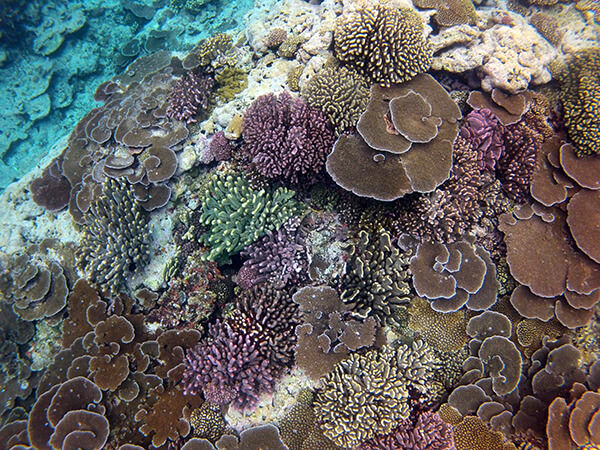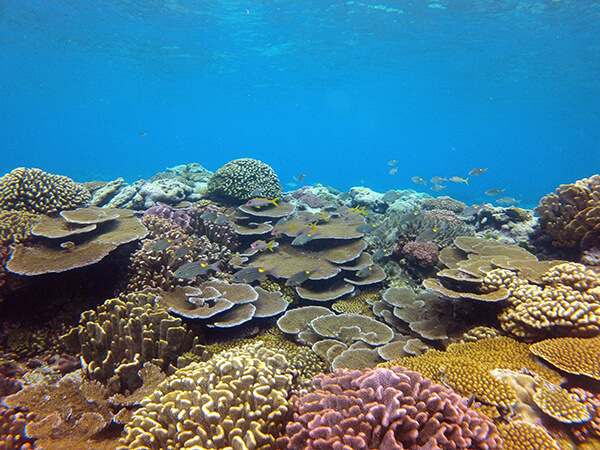Coral reefs
National Marine Sanctuary of American Samoa protects lush coral reefs throughout the Samoan archipelago. The coral reef is a vibrant marine ecosystem. It provides shelter and habitat for tropical fish of all shapes, sizes, and colors, as well as other sea life such as crustaceans, squid, sharks, and sea turtles. Coral reefs are among the oldest and most diverse ecosystems on Earth. Even though they cover less than one percent of Earth’s surface, it is estimated that they support more than 25 percent of all marine life.
Plant or animal?
Coral may look like a plant, but it is actually an animal. Corals are cnidarians, a group of animals which also includes sea anemones and jellies. There are two kinds of corals: hard coral and soft coral. There are over 250 coral species in American Samoa.
Coral colonies grow very slowly. Under optimum conditions, massive corals may grow up to 0.8 inches (two centimeters) a year, and branching corals may grow up to 4 inches (10 centimeters) a year. Scientists can determine the age of a coral the same way as a tree, by counting annual growth rings. One of the largest known corals in the world is Fale Bommie, or more popularly known as “Big Momma,” and is estimated to be over 500 years old!


Did you know?
- Coral colonies are made up of individual organisms called polyps. These small animals have tiny stinging tentacles that they use to capture prey, like plant or animal plankton. The tentacles pull the prey into the polyp's mouth. Polyps are no bigger than the size of a pencil eraser.
- Each polyp is an individual creature, but they live in colonies. Each polyp catches its own dinner and digests it, but the nutrients are passed along to the whole colony.
- Most corals feed during the night, and this is the best time to see them in their full splendor. Often during the day the polyps withdraw into their hard skeletons for protection.
- Corals live in a symbiotic (mutually beneficial) relationship with microscopic algae called zooxanthellae. Coral polyps give the tiny plant cells nutrients, protection, housing, and carbon dioxide. The algae uses this carbon dioxide and sunlight to make oxygen and carbohydrates, through a process called photosynthesis. The corals use the oxygen to breathe and the carbohydrates to supplement their plankton diets.
- Without zooxanthellae, corals are actually white, as the calcium carbonate skeleton is white and the polyps are translucent. The bright yellow, red, green, blue, and purple colors you see in the coral are actually the microscopic algae living in the polyps.
- Different types of coral serve as a source of medicine for a variety of diseases. Some scientists think that within the coral reef lie the cures for HIV and cancer.

